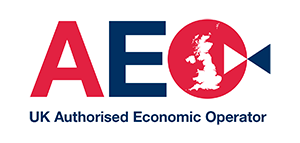
We are writing to make you aware of changes you need to make if you export goods through an inventory linked maritime location and currently complete your export declarations through the Customs Handling of Import and Export Freight (CHIEF) system.
HMRC is replacing the CHIEF system with the Customs Declaration Service (CDS). To prepare for this, community system providers (CSPs) have started partial migration to CDS, which means sending export movement and consolidation messages to CDS to be transmitted to CHIEF. These messages are then being matched with the relevant customs declarations so they can be processed and given a customs clearance status.
What do I need to do?
As a result of this change, you need to ensure you take the following two actions for any future export declarations and movements you submit with immediate effect. It is important that you do this immediately, otherwise you may experience clearance delays on any export declarations submitted through an inventory linked maritime location.
- You must not use Movement Reference Numbers (MRNs) as a reference for export arrival movements. Instead, you must use a Declaration Unique Consignment Reference (DUCR) or a Master Unique Consignment Reference (MUCR) if one exists.
- You must use the CDS Master Unique Consignment Reference (MUCR) format containing only one hyphen. If you use a CHIEF MUCR format using more than one hyphen, you may encounter delays. You can find further guidance on the formatting of MUCRs in the appendix section of this letter.
Following the steps above will ensure the movement of your export goods through an inventory linked maritime location avoids customs clearance delays while you remain on CHIEF.
APPENDIX
Guidance on CDS MUCR formats
This is set out in Section 4.1.1 of the CDS01 Inventory Linking Exports Service Design document, and this information is reproduced below.
All MUCRs should consist of a maximum length 35 of characters overall.
For Courier:
C:[A-Z]{3}[0-9A-Z]{3,30}
Use “C:” followed by:
- Three characters which must be upper case alpha (between A and Z inclusive)
- Between three and thirty characters which can be numeric (between 0 and 9 inclusive) and/or upper-case alpha (between A and Z inclusive)
Other MUCR formats:
GB/[0-9A-Z]{3,4}-[0-9A-Z]{5,28}
Use “GB/” followed by:
- Between three and four characters which can be numeric (between 0 and 9 inclusive) and/or upper-case alpha (between A and Z inclusive)
- The next character must be a “-“
- Between five and twenty-eight characters which can be numeric (between 0 and 9 inclusive) and/or upper-case alpha (between A and Z inclusive)
GB/[0-9A-Z]{9,12}-[0-9A-Z]{1,23}
Use “GB/” followed by:
- Between nine and twelve characters which can be numeric (between 0 and 9 inclusive) and/or upper-case alpha (between A and Z inclusive)
- The next character must be a “-“
- Between one and twenty-three characters which can be numeric (between 0 and 9 inclusive) and/or upper-case alpha (between A and Z inclusive)
Current CHIEF MUCR formats are permitted although the use of a second hyphen for “GB/” MUCRs or other non-alpha numeric characters are not accepted.
HMRC
CustomsLink are fully compliant with the correct requirements for MUCRs, DUCRs in CDS. Speak to one of our expert team if you would like us to help with your customs declaration requirements.








